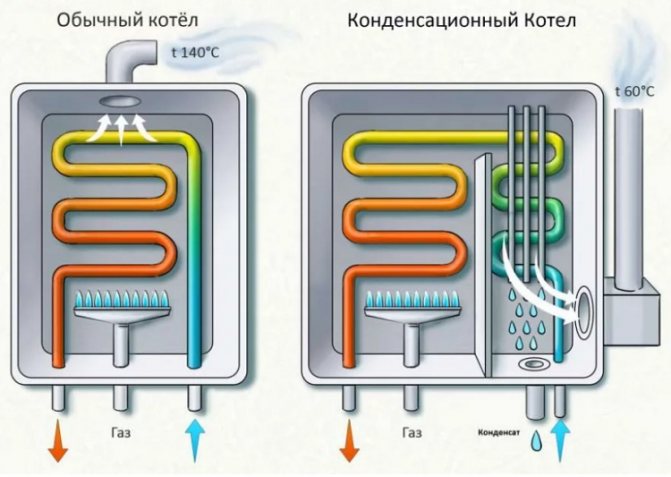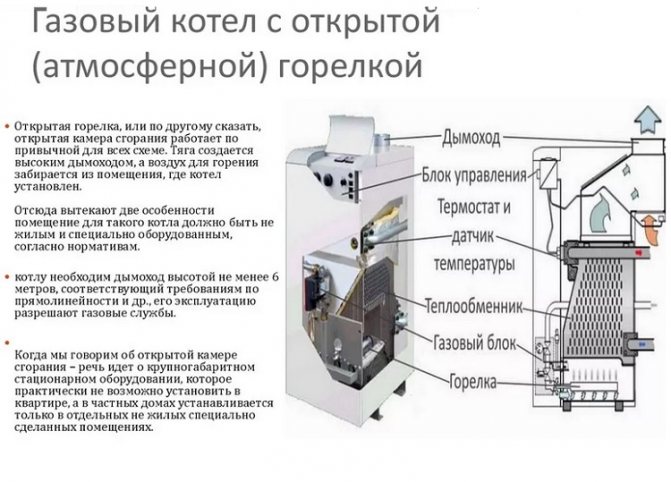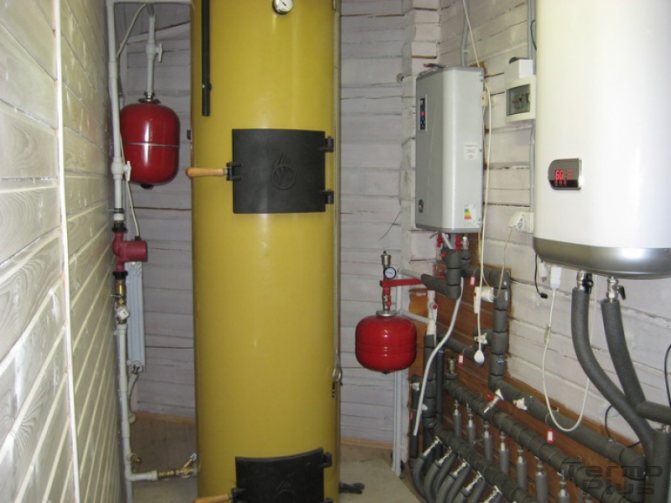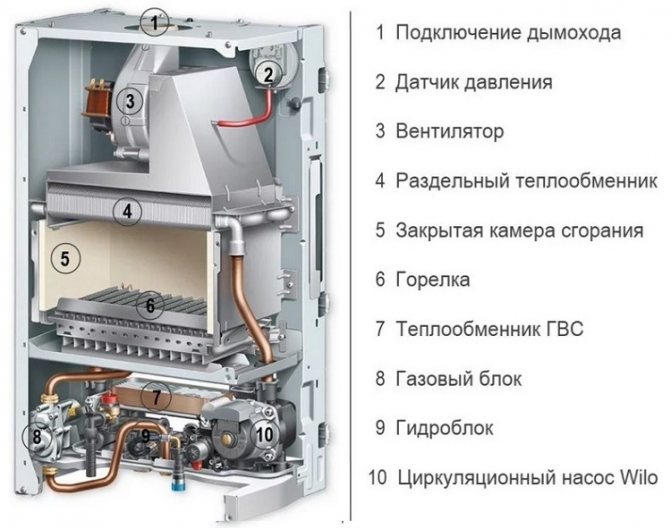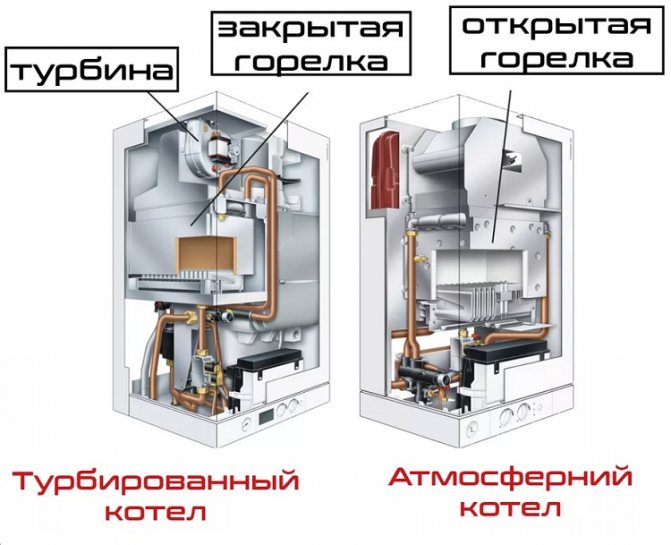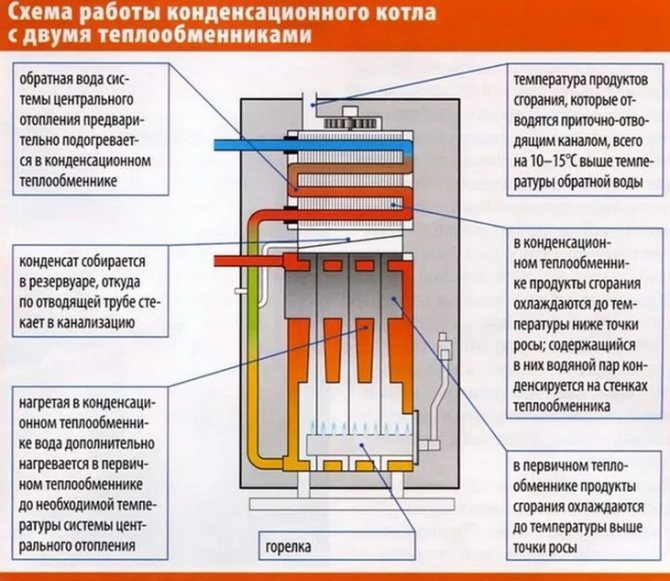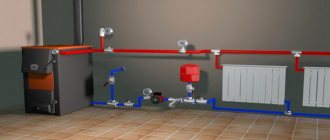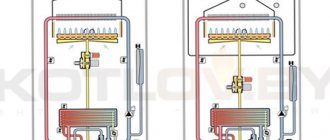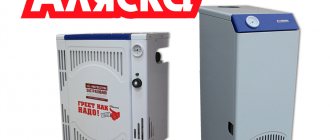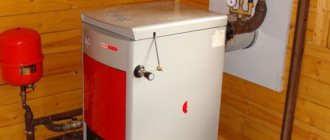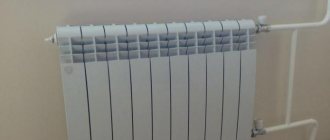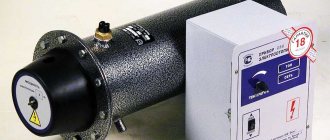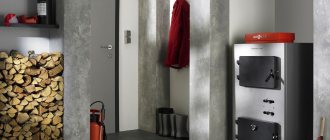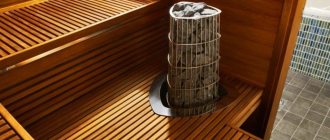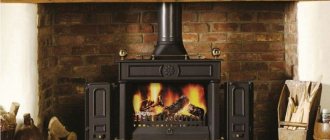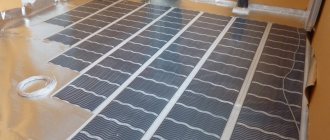What are turbocharged gas boilers
Turbocharged gas boiler - the unit responsible for heat supply, which is additionally equipped with a forced air exchange system. Due to this feature, it does not require the arrangement of a full-fledged smoke shaft, since communication with the external environment occurs through a coaxial chimney.
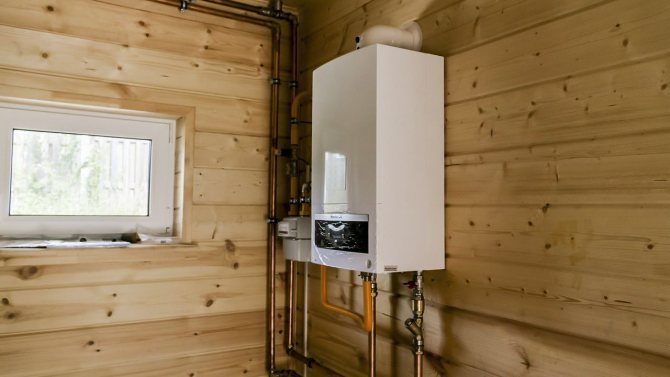
A coaxial chimney is a one-piece construction (usually supplied with the boiler), consisting of pipes of different diameters, nested one inside the other. Oxygen is taken through the outer channel (large pipe), and waste products of combustion are removed through the central (smaller pipe).
Since the high-quality ventilation of the room itself is not important for turbo boilers, they can be installed both in private houses and in city apartments.
The main and, perhaps, the only significant disadvantage is that, due to the presence of a turbine and more complex automation, they are extremely volatile.
Device and principle of operation
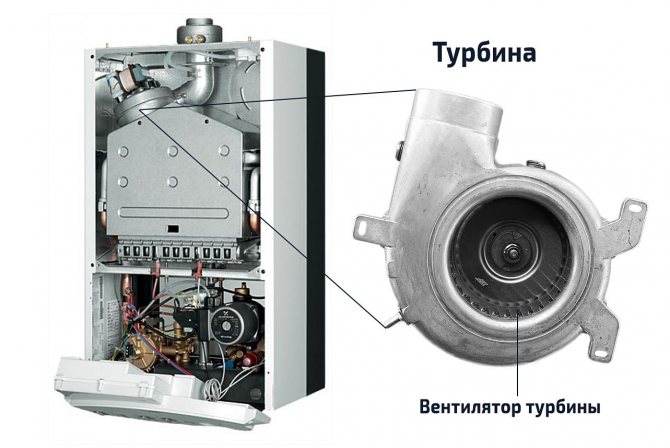

The basic structure of the turbo boiler is not much different from its predecessor, but the presence of auxiliary units introduces some changes in its design.
The air necessary to maintain combustion enters from the street directly into the closed combustion chamber. Since it is isolated from the living space and is directly connected only to the coaxial chimney, this completely excludes any influence of the exhaust gases on the internal microclimate.
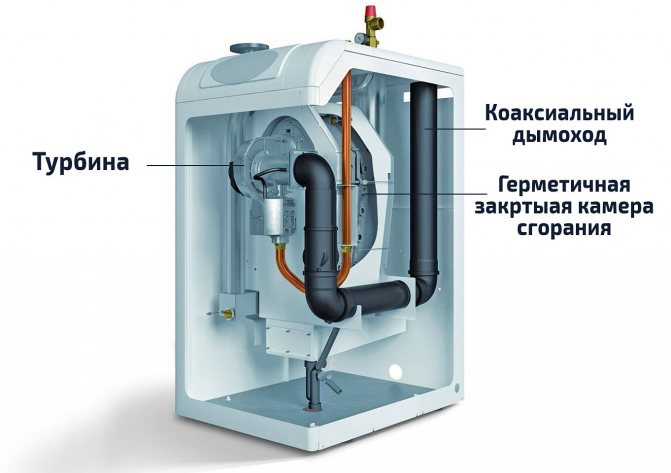

The device is a turbocharged floor model.
The fan (turbine) provides smoke removal outside the house without the use of exhaust fans, creating excess pressure (turbocharging).
The rotation speed of the turbine fan is automatically controlled, therefore, even with a decrease in gas pressure in the main line, the composition of the gas-air mixture remains optimal. When the power changes, the speed is instantly selected, which will provide the required amount of air and proper traction. Thus, the best conditions for the operation of the burner are observed, allowing to obtain the greatest amount of energy from the fuel.
How to choose a room thermostat and save up to 30% per month on heating
Atmospheric or turbocharged: which is better
A traditional atmospheric boiler has an open combustion chamber: air intake for gas combustion comes from the room. This means that the consumed oxygen must be fully replaced with new one. This requires supply and exhaust ventilation.
Without the organization of good supply and exhaust ventilation, normal operation of an atmospheric gas boiler is impossible. Firstly, the fuel will not be able to completely burn out and, as a result, the coolant will not receive a certain amount of heat, and secondly, life-threatening carbon monoxide (CO) - carbon monoxide - forms in the room.
Therefore, for small buildings, where it is problematic to separate a ventilated boiler room with a vertical chimney separate from the living area, it is better to choose a turbocharged boiler. And for gas heat supply of small retail space, offices and typical high-rise buildings, so it is generally the only option.
Chimney boilers overview
Chimney boilers are called boilers that have an open combustion chamber and a natural exhaust of gases through a conventional pipe.
Chimney units differ from non-chimney units in the principle of exhaust gas removal and the design of combustion chambers:
- the principle of gas removal - atmospheric boilers need a standard chimney, chimney-free units use a coaxial pipe;
- combustion chambers design - an open burner is installed in atmospheric boilers; smokeless units have a closed firebox;
- productivity - chimney boilers are clearly inferior in this indicator to chimney boilers, the efficiency of the first is 80-90%, the second is 93-97%.
How to do Installation of a wall-mounted gas boiler yourself
What are the gas boilers of domestic production, read here
Let's review the popular chimney wall-mounted double-circuit gas boilers:
- Baxi ECO FOUR 24 - a double-circuit gas boiler with a capacity of 24 kW, which is capable of heating an area of up to 240 m²; has an efficiency of -91%, the diameter of the chimney is 12 cm.
- Rihters Helios 24 (with chimney) is a 24 kW double-circuit gas boiler capable of heating up to 160 m².
- Bosch ZWA 24-2 K 7716010216 with a power of 24.4 kW, a flue diameter of 130 mm, a flue gas temperature of up to 122 ° C, a permissible gas pressure of 0.013 bar, heats water to 50-60 ° C, a heating medium up to 85 ° C, capacity DHW at t = 30 ° C 11.4 l / min.
- RADIANT RBC 24 ENERGY is a double-circuit chimney boiler with bithermic copper heat exchanger. This unit is unpretentious and reliable, has a modern design and a convenient control panel. The boilers are manufactured by the Italian S.p.A. An overview of the energy gas double-circuit wall-mounted chimney boiler shows that with a low power of 24 kW, it is capable of heating a significant area of the room - up to 300 m². Most assemblies and parts are made of materials that do not corrode: brass, copper, stainless steel, plastic.
Reviews of household models with forced air exchange: advantages and disadvantages
According to the reviews of the owners of turbocharged gas boilers, the following pros and cons can be distinguished:
| Dignity | disadvantages |
| safety - the tightness of the closed combustion chamber practically eliminates the risk of smoke entering the room | high price - prices for wall models are 20-30% higher, for floor models - 20-50% higher, but you can eliminate the cost of building a full-fledged chimney |
| free placement - air intake from the street allows the boiler to be installed in very small rooms (of course, meeting the requirements) | constant noise - the active operation of all turbo boilers is inevitably accompanied by the monotonous sound of the fan rotation, its volume depends on the model, as well as the presence of a sound insulation layer in the boiler |
| easy chimney installation - for the output of the coaxial pipe, it is enough to make a hole (Ø 110) in the outer wall of the house | volatility - any voltage problems (interruptions, non-compliance) cause the fan to stop |
| low fuel consumption - efficiency is achieved due to automation, which controls the speed of rotation of the turbine |
Difficulties with power supply can be easily avoided by connecting a voltage stabilizer and a backup power source to a turbocharged boiler - an electric generator (gasoline, diesel) and an uninterruptible power supply (UPS). However, it must be borne in mind that this will lead to additional material investments.
Location
Installation of gas boilers can be either on the floor surface or suspended from the wall. Models of the first type are called floor-standing, they are very large in size. In many cases, they have a cast iron or steel heat exchanger. After all, it is these materials that have a lower price for boilers and a good level of power. A significant disadvantage of choosing floor-standing boilers is their huge dimensions and they weigh a lot. And the mounted ones have several times less heating power, so the choice depends only on what you expect. For example, a large house needs a more powerful boiler, and a wall-mounted boiler would be ideal for a small room.
How to choose a turbocharged gas boiler for heating a private house
Wall-mounted or floor-mounted
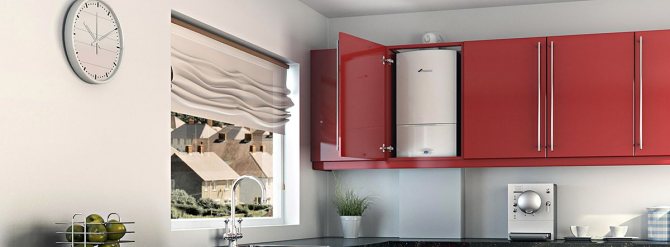

Wall-mounted models fit perfectly into the interior of the kitchen or can be completely hidden in the closet.
- floor - more versatile and durable, since the structure is unlimited in weight, they are often equipped with durable cast iron heat exchangers .;
- hinged (wall) - compact and lightweight, medium and low power (10-50 kW) boilers, often having a higher efficiency than floor-standing models. However, due to weight requirements, they use less corrosion-resistant steel and copper heat exchangers.
In addition, wall-mounted boilers contain all the necessary modules of the heating system in one housing (expansion tank, circulation pump, safety valve, air vent, etc.), which not only simplifies, but also makes installation cheaper. Floor standing models are rarely equipped with all the necessary modules.
Single-circuit or double-circuit
The functionality of a turbo boiler is determined by the number of circuits:
- single-circuit - its capabilities are limited exclusively by heating;
- double-circuit - along with heating it heats water for domestic needs.
A double-circuit boiler is a combination of a boiler and an instantaneous heater, i.e. the heating of the room is stopped when hot water is supplied. It is worth clarifying that, contrary to popular belief, the coolant does not have time to cool down during the downtime, so the temperature in the dwelling remains the same.
Of course, the cost of the double-circuit version is 10-30% higher, but it is still more profitable than organizing hot water supply in any other way, for example, using a boiler and a single-circuit boiler. And if necessary, one of the circuits can be turned off - for example, in the summer, when there is no need to heat the dwelling.
Heat exchanger type and material
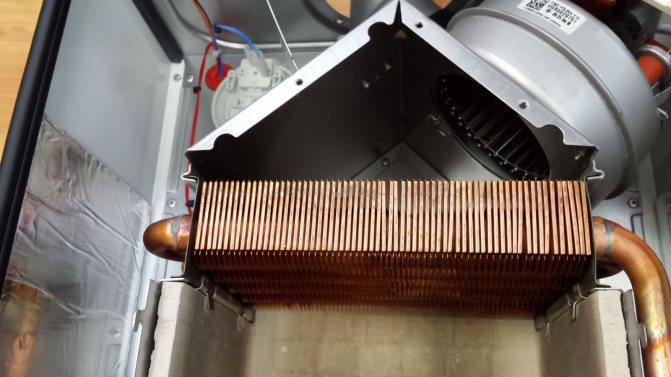

A copper heat exchanger is the most optimal option for a wall-mounted model.
The material of the heat exchanger affects the durability of the boiler:
- cast iron (service life 25-30 years and more) - the most heat- and corrosion-resistant metal, but fragile and heavy, therefore it is used only in floor-standing models;
- copper (service life 12–17 years) - very light and heat-conducting metal (it quickly heats up and cools down), slightly corrosive, but can burn out.
- steel (service life 10-15 years) - the metal tolerates transportation well, since it is not sensitive to physical stress, light and inexpensive to manufacture, but is prone to rust formation, which leads to leakage over the years.
Double-circuit boilers are also divided according to the type of heat exchanger: separate (for each circuit its own) and double - bithermic (the DHW circuit passes through the main heat exchanger). The latter option is cheaper, but it is less reliable, since the scale formed in it is almost impossible to clean, it is the clogging with scale that often causes premature breakdown.
Efficiency
Despite the fact that the atmospheric (90–92%) and turbo boilers (92–95%) have “pure” efficiency practically the same, the latter will have a higher gas consumption efficiency.
The point is to use a coaxial chimney: when cold air from the street enters its outer cavity, it begins to heat up even before entering the combustion chamber from the heat of smoke (100-130 ° C), which comes out through the inner cavity of the same chimney. Therefore, fewer resources are spent on further heating. To this it is worth adding more efficient control of air flow and traction, which also affects gas consumption.
Minimum required power
You can calculate the required power of a turbo boiler using a simple formula: where 1 * kW of energy goes to 10 m2 of heated area.
* heat loss of an average residential building with ceilings up to 2.7 m from central Russia.
For example, for a standard house in the Moscow region with 2 bricks masonry and a ceiling height of 2.7 m, an area of 120 m2, the minimum suitable power of a turbo boiler will be Q = 120 ÷ 10 × 1 = 12 kW.
We recommend setting a margin of 15–20% of this value in order not to operate the unit at the limit, therefore, for the same object, Q≈14–15 kW.
Also, if we consider a two-circuit model, then the use of hot water supply will have to add at least 15–20%, in total it will already turn out that Q≈16–17 kW. It is also important not to overdo it with power, otherwise the boiler will “clock” (turn on and off) too often, which will reduce its resource.
How to accurately calculate the required boiler power Individual calculation, formula and correction factors
Material and construction
When choosing a heat exchanger, you must carefully consider and weigh everything. After all, there will be liquid inside, and outside it will be exposed to high temperatures. Therefore, the material must simultaneously possess such qualities as strength and thermal conductivity at the same time. The higher the transfer of heat energy during gas combustion, the higher the boiler efficiency. Most often, manufacturers make heat exchangers from cast iron, steel or copper. Due to the fact that these cast iron materials do not tend to rust when exposed to water, they are considered one of the longest in use. But he has such a disadvantage as heavy weight. If used improperly, it can burst at the intersection of different temperatures, so it needs to be washed more often.
The steel heat exchanger is the most popular. Its price is lower than that of cast iron and copper. This material is very flexible, this eliminates the appearance of cracks. But a steel heat exchanger is prone to corrosion.
Copper heat exchangers are much more resistant to rust and have the highest heat transfer rates. Copper is lightweight and small in size. The disadvantage of this material is its overpriced, but it meets all expectations.
In the first channel of the heat exchanger, the liquid for the heating system is heated, and in the second for domestic needs and water supply. Inside, the heat exchanger system can be either the most common or bithermal. In the first case, it is possible to connect only one water circuit, and in the second, several.
The best known manufacturers and models: characteristics and prices
BAXI ECO-4s 24F
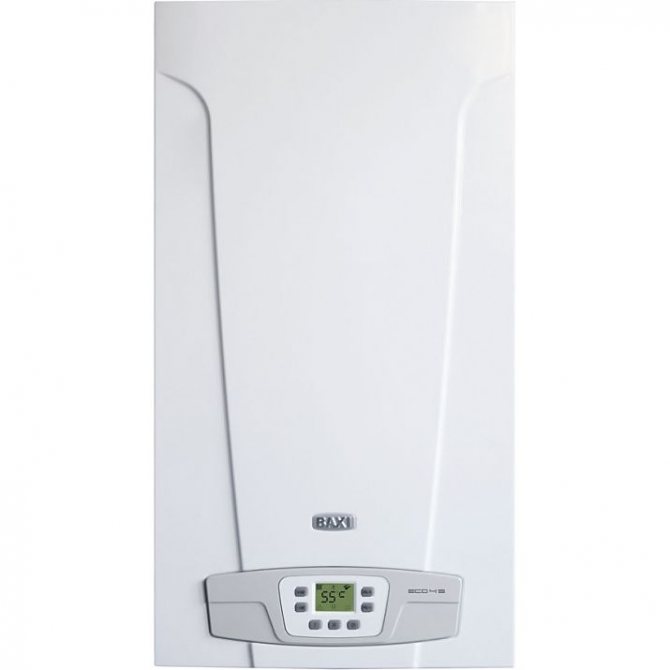

The Italian double-circuit turbo boiler with a capacity of 24.0 kW was developed taking into account the specifics of Russian conditions, therefore it is adapted to work with low gas pressure, power outages and other unstable indicators. It also has one of the best efficiency in its price segment - 92.9%, while gas consumption is 2.54 m3 / h. The primary heat exchanger is made of copper.
The owners note the almost silent operation, for more than 5 years of operating practice, there were no serious service complaints.
Cost: 33 110 - 36 850 rubles.
Manufacturer: BAXI (BAXI), Italy.
Vaillant turboTEC pro VUW 242 / 5-3
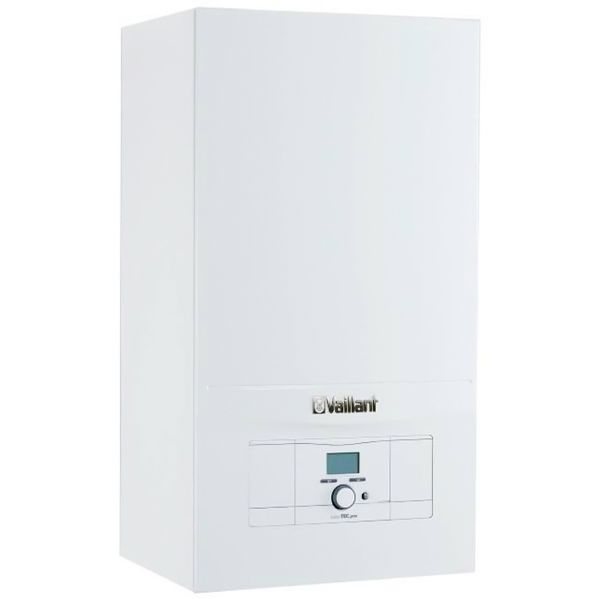

Dual-circuit model from the reference German brand with a capacity of 24 kW. Differs in particular reliability and durability due to excellent build quality, use of high-tech alloys and the best materials. Efficiency 91%, maximum gas flow 2.80 m3 / h. It also features a copper primary heat exchanger, modulating burner, functional automation with many protective systems and a pleasant, stylish design.
Cost: RUB 53,920 - RUB 57,860.
Manufacturer: Vaillant (Vailant), Germany (assembled in Slovakia).
Viessmann Vitopend 100-W A1HB001
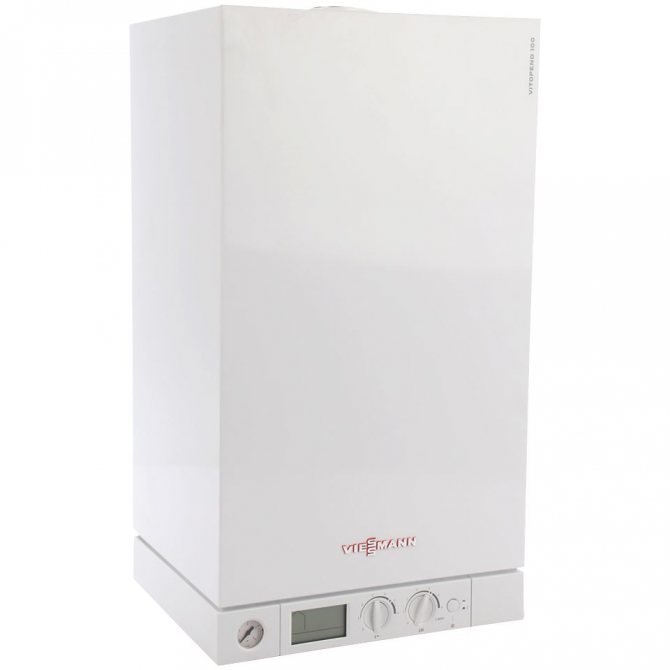

One of the best gas turbocharged boilers for heating a private house and another reference German model with a capacity of 24 kW. Like the previous Vaillant turboTEC, it is distinguished by its high reliability and durability, while the boiler is absolutely not picky about the quality of the coolant and the pressure in the gas main. Efficiency - 91%, maximum gas consumption - no more than 2.77 m3 / h.
A serious advantage is the presence of a programmer that allows you to set the boiler operation settings for the next day or week, for example, setting the temperature to 15 ° C during working hours when the owners are not at home, which will significantly reduce operating costs.
The only common problem is that the boiler shuts down due to icing in the chimney at temperatures below -17-18 ° C. The solution is to monitor the condition of the chimney and promptly knock down ice, insulate its outer part or install an anti-icing structure.
Cost: 36,010 - 43,550 rubles.
Manufacturer: Viessmann (Wiesman), Germany.
Buderus Logamax U072-24
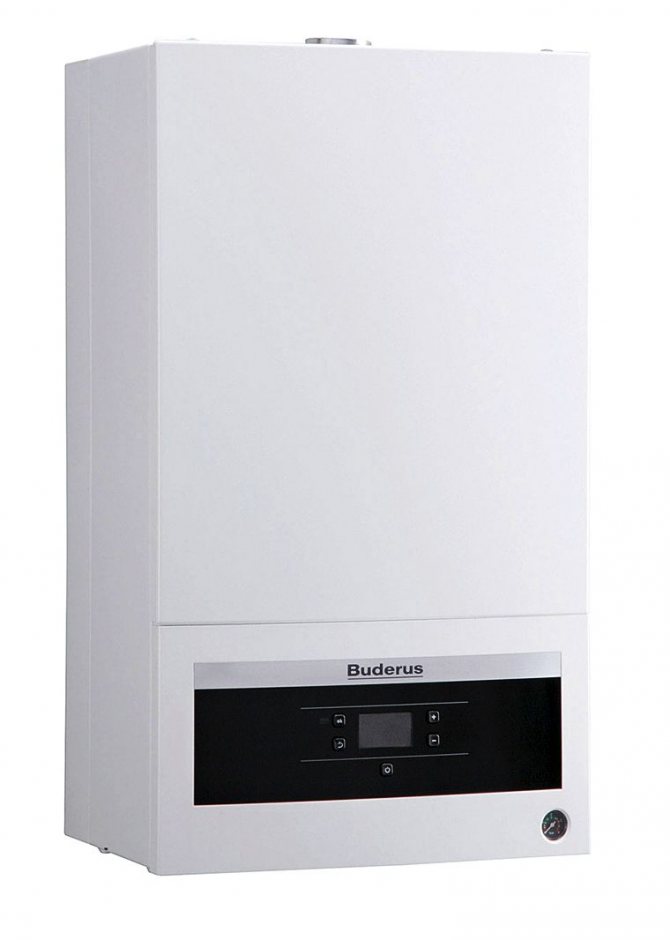

Wall mounted turbocharged gas boiler with a capacity of 24.0 kW. In fact, this is another reference German model, but with Russian localization, which made it possible to significantly reduce its cost and distinguish it from its analogues. The efficiency is 92%, the maximum fuel consumption is 2.8 m3 / h. The boiler is also equipped with a copper primary heat exchanger, modulated by a burner.
The only drawback is the lower Russian build quality, which is not typical for other German and Italian models.
Cost: 27 950 - 34 820 rubles.
Manufacturer: Buderus (Buderus), Germany-Russia.
Navien GA 23KN
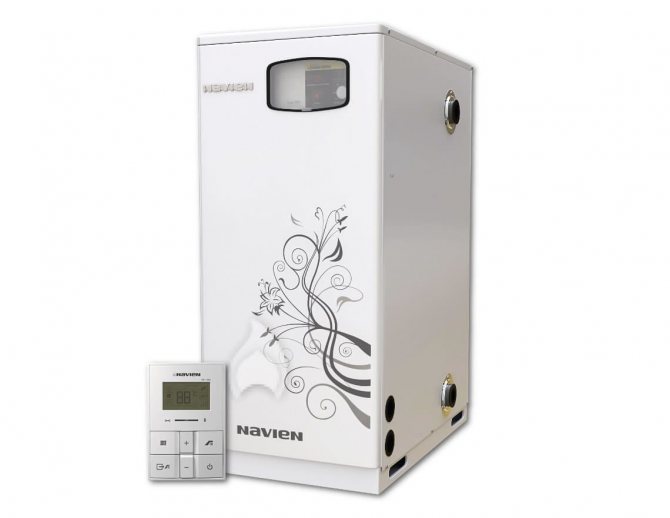

The floor-standing two-circuit turbo boiler with a capacity of 23.0 kW has a modest gas consumption of 2.24 m3 / h. It is equipped with a unique protection against voltage surges: with a difference of ± 30%, the SMPS chip is triggered on the microprocessor, which allows you to continue working without the risk of damaging the electronics. At the same time, the boiler is equipped with a modulating burner, a programmer, a room thermostat and a remote control are already included in the factory configuration.
Perceptible disadvantages are the steel heat exchanger, mediocre build quality, noisy, relative to the above models, work.
Cost: 32 980 - 36 140 rubles.
Manufacturer: NAVIEN (NAVIEN), South Korea (often with Russian assembly).
Rules for choosing a double-circuit wall device
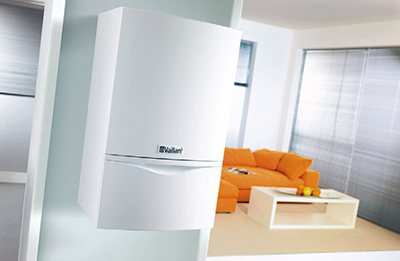

There are a huge number of different gas boilers on the market for heating apartments and country houses. Most of them represent compact and lightweight devicesthat do not take up much space in the kitchen or pantry.
Wall mounted models are usually less powerthan floor-standing. Double-circuit help not only to heat the house, but also heat the water.
When choosing a gas boiler, pay attention:
- on the heating capacity and territory;
- for availability water heating functions;
- on the warranty and free service period;
- on the the reliability of the material from which the heat exchangers and burners are made;
- on the economical energy consumption;
- on the electric ignition;
- on the ease of control system.
You need to choose the best option for yourself for the removal of exhaust gases through certain systems of the chimney, fan and various kinds of pipes.
Reference! The larger the territory of the house, the more powerful you need to choose a boiler. Please note that heating 10 sq. meters out of order 1 kW of power... Accordingly, a boiler with a capacity less than 10 kW it is not economically feasible to buy.
If you want to constant maintenance of water temperature, it is advisable to give preference to boilers with flame modulation function. Heat exchangers are best chosen from stainless steel, as they last the longest.
Excellent proven themselves cast iron and aluminum details. In order for the equipment to be in operation for many years, it must have a serious security system: protection against overheating, voltage drops in the network, freezing.
Prices: summary table
Comparative rating of popular turbocharged gas boilers:
| Unit model | Efficiency,% | power, kWt | DHW, l / min. | Consumption, m3 / h | price, rub. |
| BAXI ECO-4s 24F | 92,9 | 24 | 13,7 | 2,54 | 34 500 |
| Vaillant turboTEC pro VUW 242 / 5-3 | 91 | 24 | 11,5 | 2,80 | 56 000 |
| Viessmann Vitopend 100-WA1HB001 | 91 | 24 | — | 2,77 | 40 000 |
| Buderus Logamax U072-24 | 92 | 24 | — | 2,80 | 29 500 |
| Navien GA 23KN | 91,5 | 23 | 13 | 2,24 | 34 500 |
Calculation of heat loss at home
We say right away - there is no single method for calculating the coefficient. The parameter changes depending on your climate. It is all the more important to take a closer look at this stage of preparation. Even a specialist will not determine by eye, without calculations, information on the required boiler power. Even low-power ones, such as Tenko SKE standard, can heat an average apartment up to 65m². But what it exactly should be - it will become known after filling out a special questionnaire - the document is freely available, anyone who wants to fill it out on the Internet.
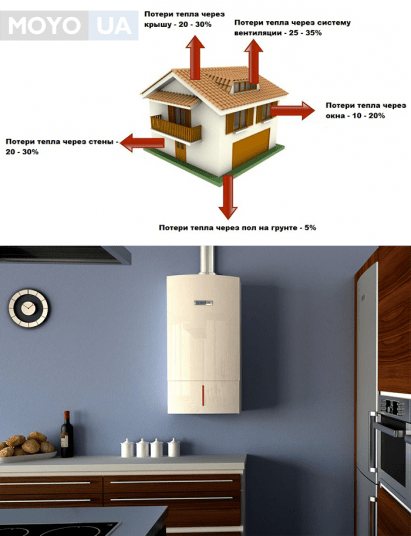

The specialists approached the compilation of the questionnaire responsibly. By filling in the fields, you will not be able to make a mistake.The only exception is incorrect filling of the online form. All other calculations of the boiler for the house will be made by the program.
It will be useful: Choosing a heating boiler: solid fuel, electric or gas? 3 main criteria
So, here are the questions you need to be prepared for - specify:
1. Heat loss through walls
This parameter is influenced by the area of the facade and the ventilated layer (walls come with it, and sometimes without it). The first wall covering is the paramount criterion, without which it would be too risky to choose a heating boiler. Reinforced concrete or foam concrete, mineral wool, drywall, plywood or wood - the material affects the decision of what capacity to buy solid fuel equipment. The thickness of the first layer of the house is also important. For thin-walled houses, buy a medium-power boiler - for example, Unimax UNI201516.
2. Heat loss through windows
An important condition. It is logical that more heat will "go away" with a single-chamber glass unit than with two-chamber ones. The area of the windows is also important when calculating the power of the boiler. Measure it again before filling out the questionnaire.
3. Heat loss through the ceiling and floor
As you can imagine, in a room with an attic and an unheated basement, you need to install powerful equipment - like RODA Strom SL. Incorrectly selected power of the device will ruin several winter months spent in a country house - heating is clearly not enough for a comfortable life.
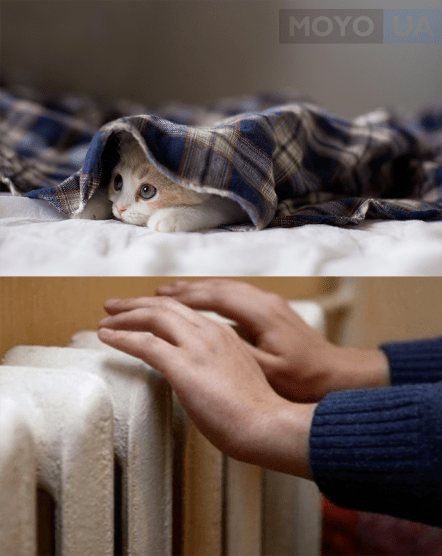

Useful for your reference: What to choose - electric or gas boiler? Comparison by 4 parameters
If you do everything right, your efforts will be rewarded with a profitable investment in the purchase. Consider that you have coped with the task - most likely you will get the best result in terms of price and quality.
How to choose a condensing boiler?
It is no secret that condensing boilers have the highest efficiency, which effectively use the heat of condensed steam. The condensation process itself is carried out in a special heat exchanger. The efficiency of such boilers is much higher than that of gas boilers.
The selection of such a boiler unit begins with the heating system, since the efficiency of its operation is directly proportional to the parameters of the heating system. The lower the water temperature, the stronger the steam condensation, and with it more heat energy is released, which significantly increases the efficiency. Therefore, when installing and selecting a boiler, considerable attention should be paid to the parameters of the water in the return pipe, the temperature in which should not be higher than sixty degrees Celsius. It is very good for use with underfloor heating systems, where the water temperature is slightly lower, therefore, with an underfloor heating system, it can be used all year round. In order for the unit to operate in energy saving mode, first of all, it is necessary that the inlet water temperature is less than 57 C.
Of course, the most important selection parameter is the heat output, so if it is very small compared to the heat load, which is calculated for the area or volume of the room, then maintaining a constant temperature will be impossible, which will create uncomfortable conditions during the heating season.
Marking
All versions of the line can be divided into 4 groups:
- AKGV
- KSGV
- AOGV
- KSG
This non-volatile equipment is capable of operating in closed and open heating systems. Coolant circulation - forced or natural. Next to the abbreviation - marking, there is a figure indicating the power - 7-35 kW. Also, the marking indicates the type of automation:
- T or AT - SABK AT;
- S - SABK S RD;
- E or EM - Eurosit.
Almost all modifications are made in accordance with the current trends of minimalism. There is a pressure gauge in front, and other automatic elements are hidden in the case. A distinctive feature of ServiceGas products is white color. The radiator is made of steel, the burners are made of heat-resistant stainless steel. Equipped with a condensate collection device.
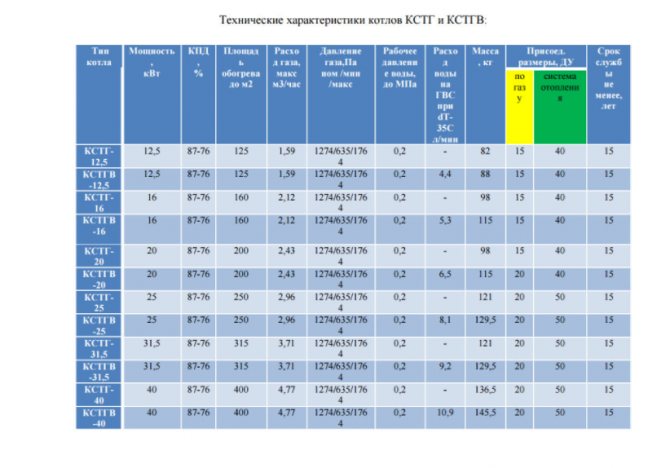

How to ignite?
The ignition sequence is carried out by turning the control knob clockwise. Further procedure:
- You need to turn the knob until the mark is directed to the pointer.
- Then press and hold the "Start" button.
- The piezo ignition button must be pressed until it clicks. The pilot ignites.
- Keep "Start" pressed - waiting for the thermocouple to warm up. On the igniter, the gas block operates in auto mode.
- Turn the knob counterclockwise to the required temperature.
How to choose a solid fuel boiler?
Solid fuel boilers are truly versatile, as they can operate on pellets, sawdust, briquettes, anthracite, coke and coal. They can be used where there is no electricity or natural gas supply, and the use of liquid fuels can be difficult. Moreover, solid fuel is one of the cheapest. All units are divided into two construction types: classic and pyrolysis. However, for the buyer, the choice of one type or another can be significant and significant. The classic design of the boiler allows you to fill in solid fuel once every four hours, and in the pyrolysis design, loading is carried out much less often. In addition, emissions in such a unit are significantly lower compared to a conventional boiler and they require much less maintenance.
If the supply of firewood is significantly difficult, then it is better to choose a unit on pellets, which are fed from a special bunker in portions. When selecting, the main attention should be paid to the passport, which will indicate both the main type of fuel and the reserve one. It must be borne in mind that with some types of fuel, the efficiency may decrease. There must be built-in power modulation. If the selection of the unit itself and the battery tank is carried out with a power reserve, then the time between loading the fuel will increase significantly.

